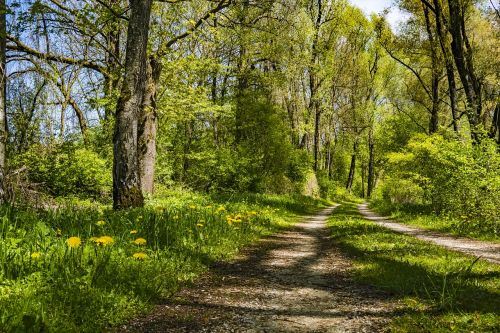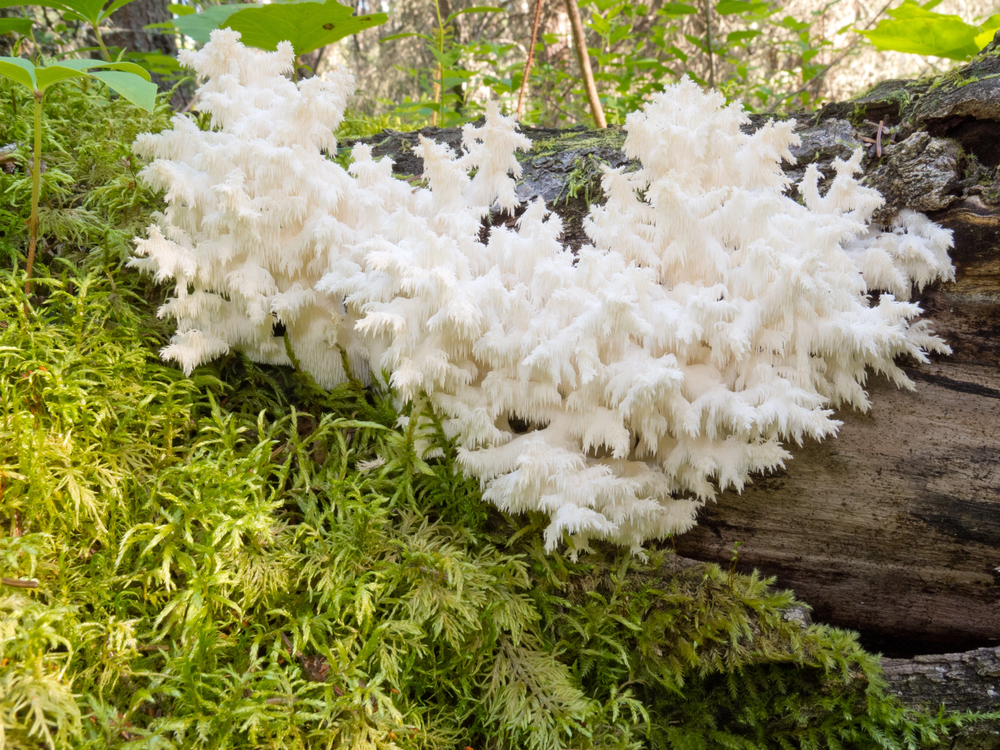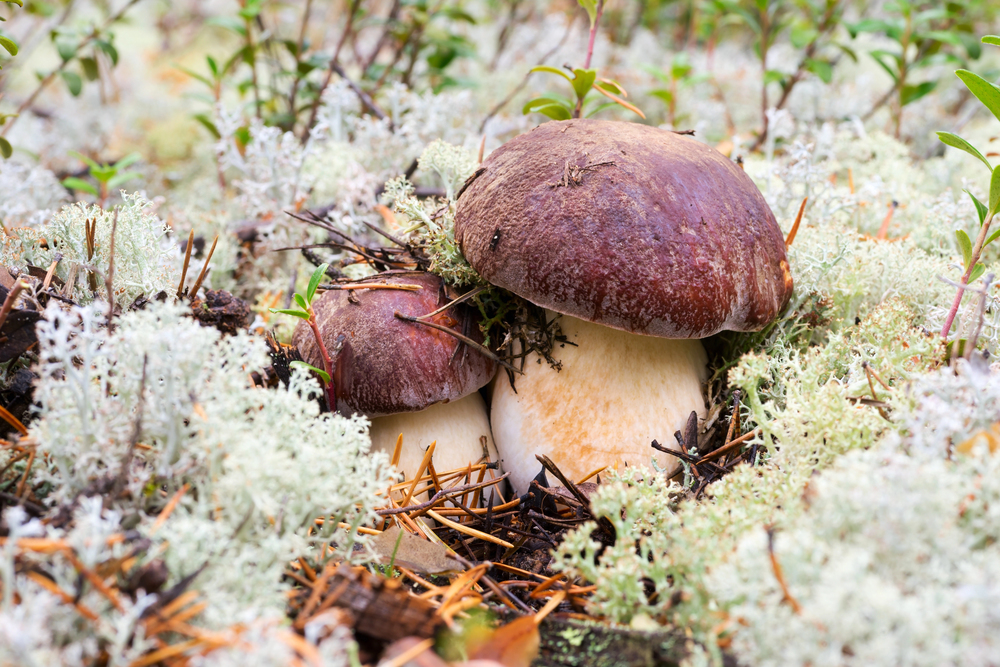Mushroom hunting, a time-honored tradition that connects foragers with nature, requires more than just keen eyes and botanical knowledge. As interest in wild mushroom foraging continues to grow, understanding and practicing proper etiquette becomes increasingly vital for preserving both the ecosystem and the culture surrounding this ancient practice. From securing necessary permits to employing sustainable harvesting methods, these unwritten rules form the foundation of responsible foraging. While the thrill of uncovering pristine patches of morels or chanterelles can be exhilarating, the true art lies in knowing how to respectfully interact with both the land and fellow foragers.
Key Takeaways
- Always obtain proper permits and landowner permission before foraging on any public or private land.
- Cut mushrooms cleanly at ground level with a sharp knife to protect the underground mycelium network.
- Leave at least 10-20% of mature specimens untouched to ensure sustainable populations and genetic diversity.
- Keep favorite foraging locations private and avoid sharing specific spots to prevent overforaging.
- Pack out all refuse, stay on established trails, and leave collection sites in better condition than found.
Respect the Land and Landowners
Stewardship forms the foundation of responsible mushroom hunting, beginning with proper respect for both public and private lands. Before venturing onto any property, obtain necessary permits for public lands or explicit permission from private landowners to guarantee legal compliance. Understanding and following local regulations helps preserve these areas for future foragers while maintaining positive relationships with property owners.
Always minimize your impact on the natural environment during mushroom hunting expeditions. Stay on established trails when possible, avoid trampling vegetation, and take care not to disturb the soil’s natural composition unnecessarily. When collecting specimens, use a sharp knife to cut mushrooms at the base rather than pulling them from the ground, which can damage the underlying mycelium network.
Pack out everything you bring in, including any refuse uncovered during your hunt. Leave collection sites in better condition than you found them by properly closing gates, respecting livestock boundaries, and adhering to posted signage. Record precise locations of productive spots using GPS coordinates or detailed maps, but maintain discretion about sharing these locations with others unless you have explicit permission from landowners.
Proper Harvesting Techniques
When harvesting wild mushrooms, using a sharp knife to cut the stem at ground level prevents damage to the mycelium network beneath the soil’s surface. Pulling or yanking mushrooms from the ground can disrupt the delicate fungal threads that allow future growth, potentially reducing harvests in subsequent seasons. Responsible foragers should leave at least 10-20% of mature specimens behind to guarantee spore dispersal and maintain sustainable populations, particularly focusing on leaving the healthiest mushrooms to promote genetic diversity.
Cut Don’t Pull
Proper mushroom harvesting requires cutting specimens at their base rather than pulling them from the ground. Using a sharp knife or specialized mushroom knife or scissors allows for clean cuts that protect the underlying mycelium network, which is vital for future mushroom growth.
The practice of cutting versus pulling helps preserve entire mushroom colonies and guarantees sustainable harvesting practices. When mushrooms are pulled from the ground, there is a significant risk of damaging the delicate underground fungal networks that may take years to establish.
| Cutting Method | Benefits | Impact on Ecosystem |
|---|---|---|
| Sharp Knife | Clean separation | Minimal disturbance |
| Scissors | Precise control | Preserves mycelium |
| Specialized tool | Professional results | Promotes regrowth |
| Multi-tool | Portable efficiency | Maintains colonies |
Field studies have demonstrated that areas where mushrooms are properly cut show higher rates of future fruiting compared to areas where pulling occurs. Expert foragers recommend carrying a dedicated cutting tool and maintaining it specifically for mushroom harvesting, guaranteeing both cleanliness and effectiveness in the field.
Leave Some Behind
Beyond the cutting technique itself, sustainable mushroom harvesting relies on a thoughtful collection strategy. Responsible foragers understand the importance of leaving at least 25% of mature mushrooms behind to guarantee spore dispersal and future growth in the area.
A systematic approach to partial harvesting helps maintain healthy mushroom populations across foraging grounds. When encountering a patch of edible mushrooms, collectors should initially assess the total quantity and deliberately leave behind the specimens that show the most robust reproductive potential.
The most effective method involves dividing larger mushroom patches into mental sections and harvesting selectively from each portion. Leave behind mushrooms that are fully mature with open caps, as these specimens actively release spores that will disseminate future generations.
Sustainable practices likewise include avoiding the collection of very young mushrooms, which haven’t had the chance to develop spores. Focus instead on harvesting medium-sized specimens that have reached their prime but haven’t yet released their spores. This balanced approach guarantees both current harvest satisfaction and long-term sustainability of the mushroom population.
Leave No Trace Behind
Responsible mushroom hunters understand the importance of maintaining pristine foraging areas by removing all garbage, including food wrappers, drink containers, and any other materials brought into the woods. When harvesting mushrooms, foragers should take care to minimize ground disturbance and carefully conceal harvest locations by smoothing over soil and replacing leaf litter to prevent others from detecting their preferred collecting spots. These practices help preserve both the natural environment and the secrecy of productive mushroom patches, ensuring sustainable harvests for years to come.
Pack Out your Trash
A fundamental rule of mushroom foraging is to leave nature exactly as you found it, minus only the mushrooms you’ve harvested. Everything you bring into the forest must leave with you, including water bottles, food wrappers, and collecting bags.
Responsible foragers maintain a dedicated trash collection system during their excursions, employing separate containers for waste and harvested mushrooms. This methodical approach prevents contamination of edible specimens and guarantees proper disposal of all materials.
| Item Type | Disposal Method | Environmental Impact |
|---|---|---|
| Plastic Bags | Recycling Bin | High/Long-lasting |
| Food Waste | Compost/Home Bin | Medium/Biodegradable |
| Paper Maps | Recycling Bin | Low/Biodegradable |
| Glass Containers | Recycling Bin | High/Long-lasting |
| Equipment Parts | Special Disposal | High/Variable |
The practice of packing out trash extends beyond obvious waste to include seemingly harmless items like fruit peels and nutshells. While biodegradable, these items can disrupt local wildlife feeding patterns and introduce non-native organic material to the ecosystem, potentially affecting mushroom growth conditions.
Remember to inspect your collection area thoroughly before departing, making certain no trace of your visit remains behind.
Conceal your Harvest Spots
Successful mushroom hunters keep their favorite foraging locations closely guarded, treating them with the same discretion as a cherished family recipe. Preserving productive mushroom patches guarantees their sustainability and prevents overforaging by maintaining limited harvesting pressure in these delicate ecosystems.
When locating new harvest spots, take careful measures to minimize visible signs of your presence and foraging activities. Remove all evidence of disturbed soil, carefully replace moss and ground cover, and avoid creating obvious paths or trails that might attract attention from other foragers.
Social media poses a particular challenge to protecting harvest locations, as GPS data and distinctive landmarks can inadvertently reveal prime spots to others. Consider disabling location services when photographing mushrooms, and avoid sharing images that contain identifiable geographical features or specific location details.
If sharing knowledge with trusted fellow foragers, establish clear agreements about maintaining location privacy. Many experienced mushroom hunters use code names for their spots and communicate hunting locations through vague geographical references rather than precise coordinates, helping preserve these valuable natural resources for future seasons.
Share Knowledge, Not Locations
Veteran foragers understand an unspoken rule in the mushroom hunting community: share your expertise freely, but keep specific gathering spots private. This balanced approach allows newcomers to learn while preserving productive locations for sustainable harvesting over many seasons.
Teaching others about mushroom identification, seasonal patterns, and proper harvesting techniques helps build a knowledgeable foraging community. Share information about habitat preferences, tree associations, and the environmental conditions that different mushroom species require to fruit successfully.
Focus discussions on helping others develop their own exploration skills rather than providing exact locations. Teach beginners how to identify indicator species, recognize favorable soil conditions, and understand the relationship between rainfall patterns and mushroom emergence.
When mentoring new foragers, demonstrate proper collection methods, including using mesh bags for spore dispersal and cutting stems cleanly rather than pulling. Explain how to assess habitat characteristics like canopy cover, ground dampness levels, and companion plant species that signal promising hunting grounds.
Consider leading educational walks that showcase identification techniques while avoiding your personal gathering spots, allowing others to develop their own successful hunting locations.
Tools of the Trade
Proper mushroom foraging requires specific tools that improve both safety and success in the field. Vital equipment includes a sturdy knife with a curved blade for clean cuts, breathable mesh bags that allow spores to spread while collecting, and a soft-bristled brush for gentle cleaning.
Navigation and documentation tools form another significant category for responsible foraging. A reliable GPS device or detailed map helps track productive locations, while a quality camera facilitates proper documentation of specimens for later identification and reference.
Safety equipment should never be overlooked during mushroom hunting expeditions. Carry a basic first aid kit, emergency whistle, and reliable communication device when venturing into remote areas, along with weather-appropriate clothing and sturdy hiking boots.
Identification resources represent the final important toolkit component for successful foraging. Pack a thorough regional mushroom guide, preferably with color photographs and detailed descriptions of edible and toxic species. Many experienced foragers also carry a small hand lens for examining spore prints and other minute identifying characteristics in the field.
Seasonal Timing and Regulations
Every mushroom species has its own distinct growing season, with most edible varieties emerging during spring and fall when temperature and humidity conditions are ideal. Morels typically appear in early spring, while chanterelles and porcini often fruit from late summer through autumn, depending on the region and rainfall patterns.
Before heading out to collect mushrooms, foragers must check local regulations and obtain any required permits or licenses. Many state and national forests have specific rules about quantity limits, approved collection areas, and harvesting methods that must be strictly followed.
Private property requires explicit permission from landowners, while public lands may restrict mushroom hunting to designated zones or seasons. Commercial harvesting usually demands additional permits and documentation beyond what recreational foragers need.
Timing considerations extend beyond seasonal patterns to include best daylight hours and weather conditions. Early morning hunting proves most productive, as mushrooms are easier to spot in angled sunlight and haven’t yet been located by other foragers. After heavy rains, waiting 24-48 hours allows mushrooms to develop while preventing damage to saturated soil.
Mindful Photography and Social Media
A skilled forager’s smartphone can be both an asset and a liability when documenting mushroom finds. While photos help with species identification and location tracking, sharing detailed information about foraging spots on social media can lead to overcrowding and habitat damage from inexperienced collectors.
When photographing mushrooms, capture multiple angles including the cap, gills, stem, and surrounding habitat without disturbing the specimen or its mycelial network. Take note of nearby trees and plants that may indicate mycorrhizal relationships, but avoid revealing specific geographic markers or coordinates in public posts.
Responsible social media practices include using generic location tags, waiting several weeks before posting seasonal finds, and focusing on educational content rather than quantity boasting. Many experienced foragers choose to share only basic identification features and habitat types while keeping precise locations private.
Consider joining private mushroom identification groups where detailed information can be shared more selectively with qualified members. These communities often maintain strict protocols about location sharing and emphasize sustainable harvesting practices over social media visibility.
Pack Safety Essentials
Beyond documenting finds with smartphones, successful mushroom hunting requires thorough preparation and safety equipment. A well-stocked pack serves as your vital survival and identification toolkit while exploring remote foraging areas.
Every mushroom hunter should carry a detailed paper map and compass, as cellular signals can be unreliable in dense forests. Pack a fully charged GPS device as backup navigation, along with a whistle for emergency signaling and a basic first-aid kit containing bandages, antiseptic wipes, and any personal medications.
Proper harvesting tools include a sharp knife with a protective sheath, collection baskets that allow spores to spread, and separate containers for different mushroom species. Bring multiple water bottles totaling at least two liters, high-energy snacks, and weather-appropriate layers of clothing including a rain shell.
Crucial identification materials should include a regional mushroom guide, magnifying glass for examining specimens, and wax paper bags for spore prints. Consider carrying bear spray in areas with large wildlife, and always inform someone of your intended location and expected return time before departing.



